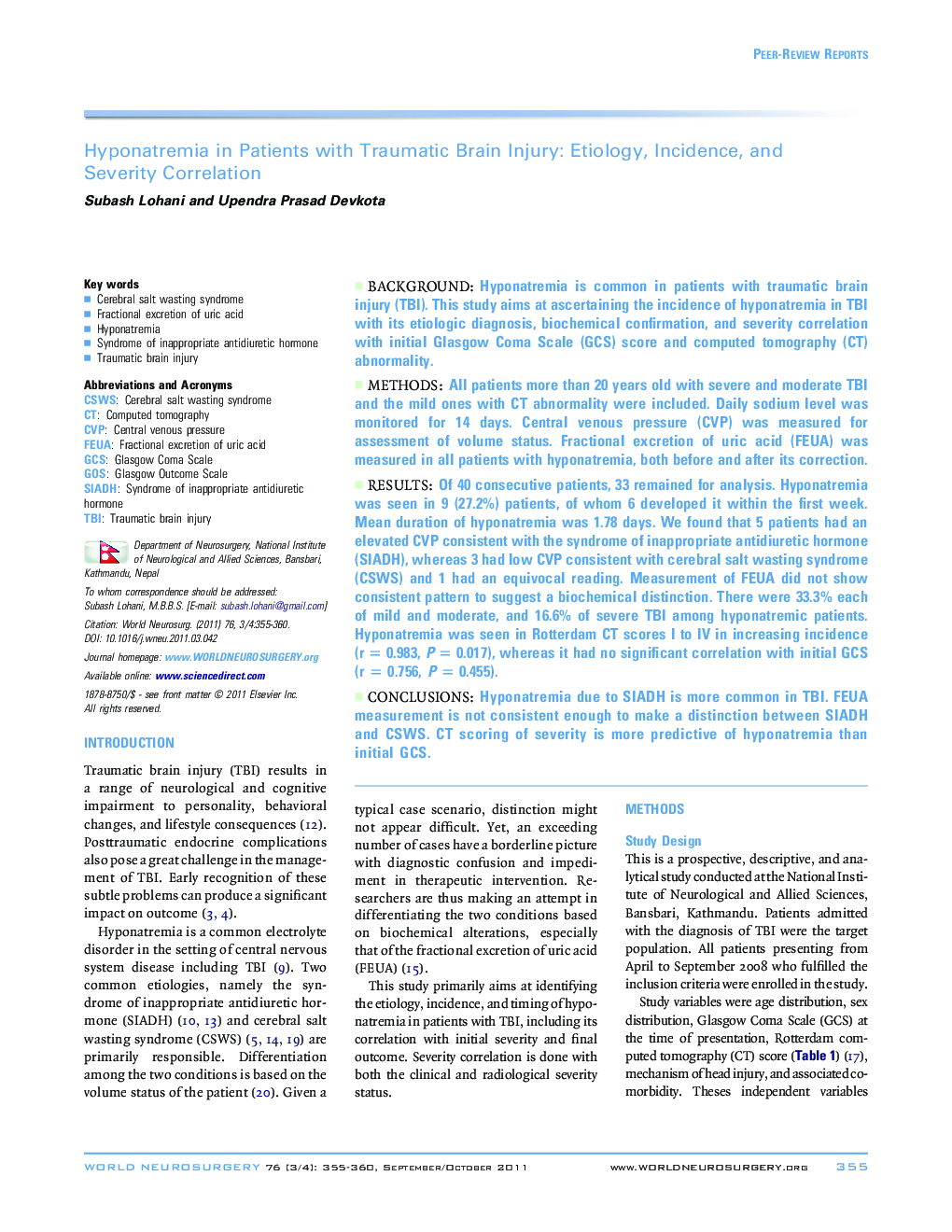| Article ID | Journal | Published Year | Pages | File Type |
|---|---|---|---|---|
| 3096798 | World Neurosurgery | 2011 | 6 Pages |
BackgroundHyponatremia is common in patients with traumatic brain injury (TBI). This study aims at ascertaining the incidence of hyponatremia in TBI with its etiologic diagnosis, biochemical confirmation, and severity correlation with initial Glasgow Coma Scale (GCS) score and computed tomography (CT) abnormality.MethodsAll patients more than 20 years old with severe and moderate TBI and the mild ones with CT abnormality were included. Daily sodium level was monitored for 14 days. Central venous pressure (CVP) was measured for assessment of volume status. Fractional excretion of uric acid (FEUA) was measured in all patients with hyponatremia, both before and after its correction.ResultsOf 40 consecutive patients, 33 remained for analysis. Hyponatremia was seen in 9 (27.2%) patients, of whom 6 developed it within the first week. Mean duration of hyponatremia was 1.78 days. We found that 5 patients had an elevated CVP consistent with the syndrome of inappropriate antidiuretic hormone (SIADH), whereas 3 had low CVP consistent with cerebral salt wasting syndrome (CSWS) and 1 had an equivocal reading. Measurement of FEUA did not show consistent pattern to suggest a biochemical distinction. There were 33.3% each of mild and moderate, and 16.6% of severe TBI among hyponatremic patients. Hyponatremia was seen in Rotterdam CT scores I to IV in increasing incidence (r = 0.983, P = 0.017), whereas it had no significant correlation with initial GCS (r = 0.756, P = 0.455).ConclusionsHyponatremia due to SIADH is more common in TBI. FEUA measurement is not consistent enough to make a distinction between SIADH and CSWS. CT scoring of severity is more predictive of hyponatremia than initial GCS.
